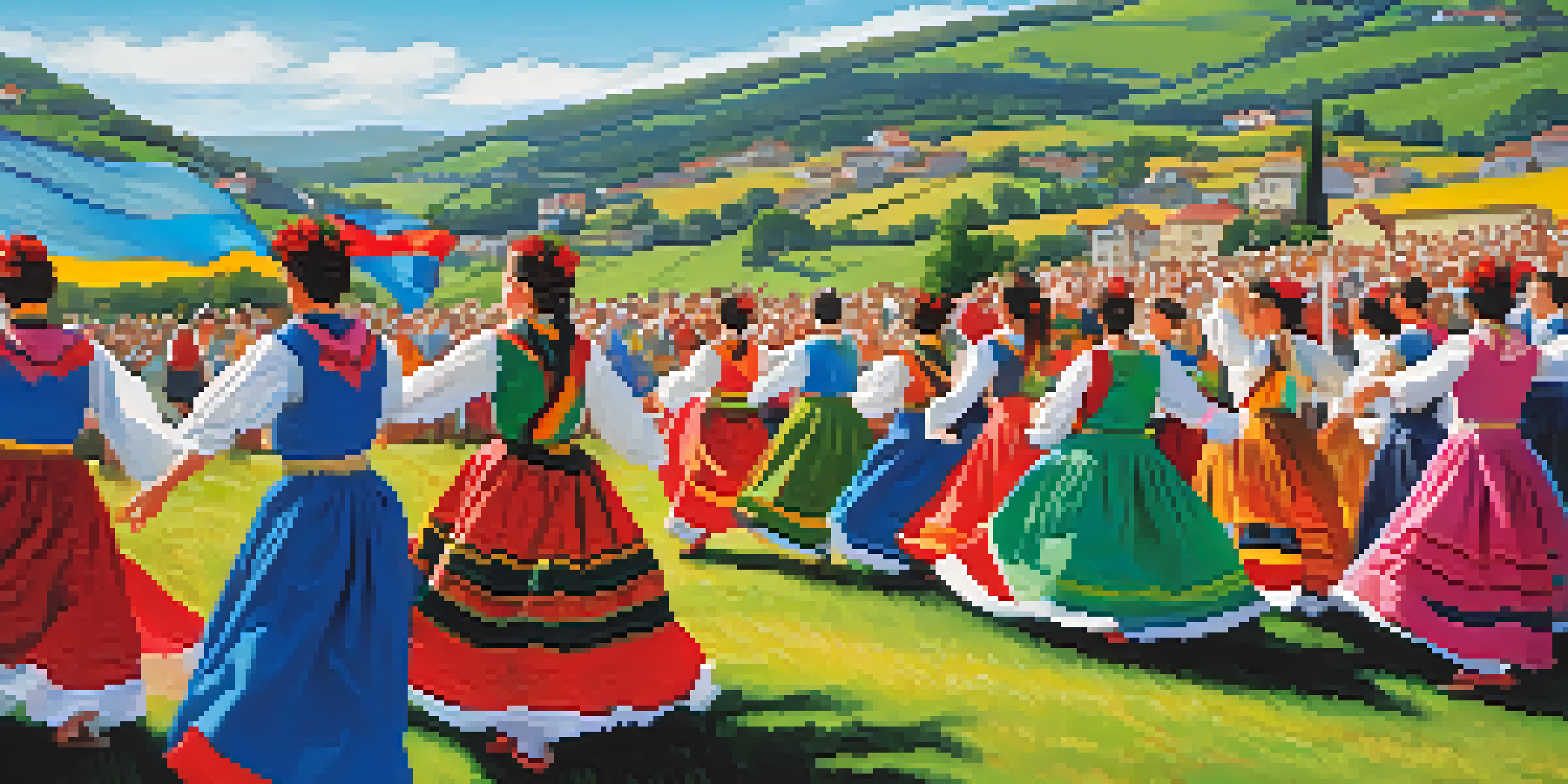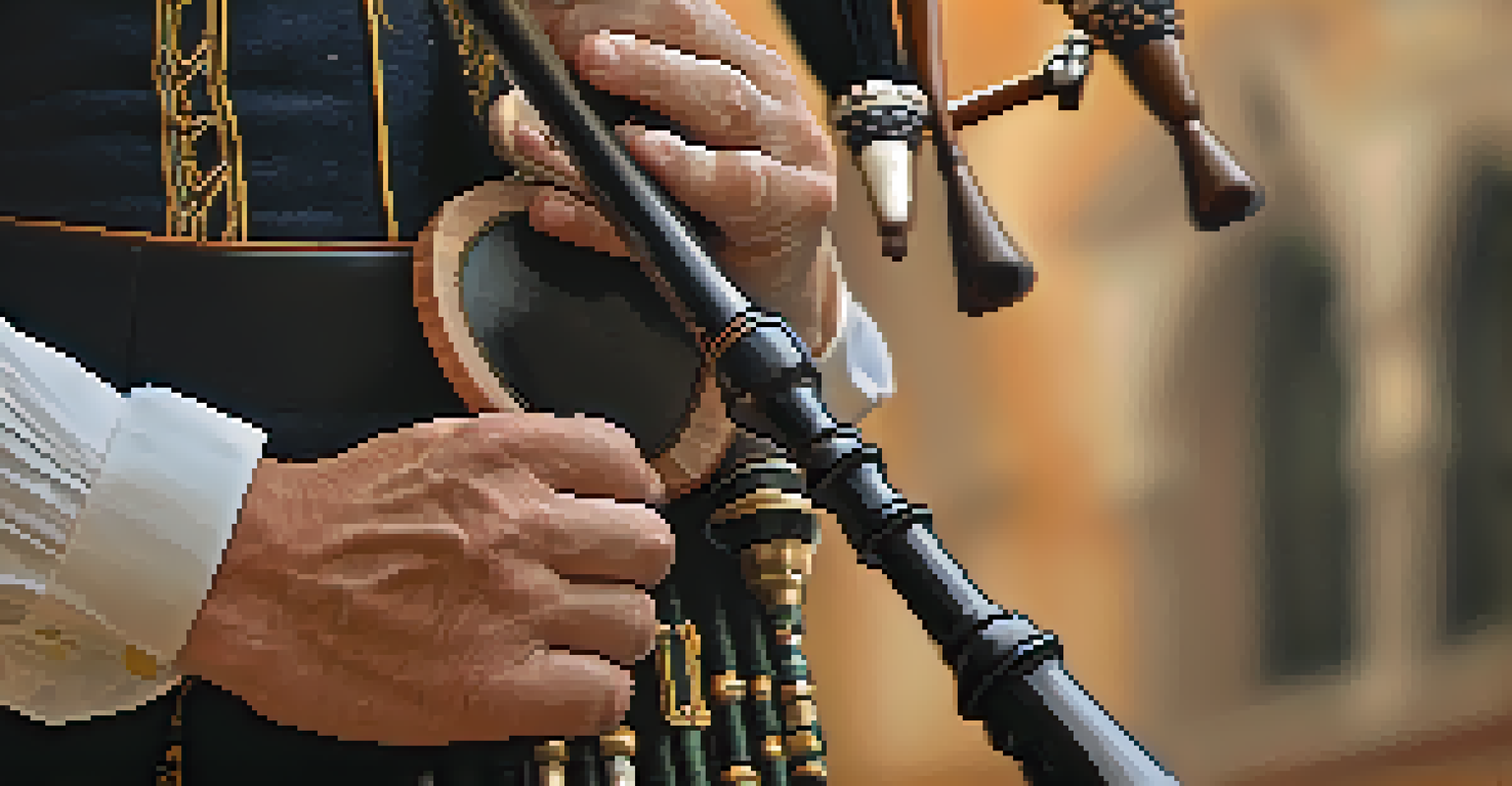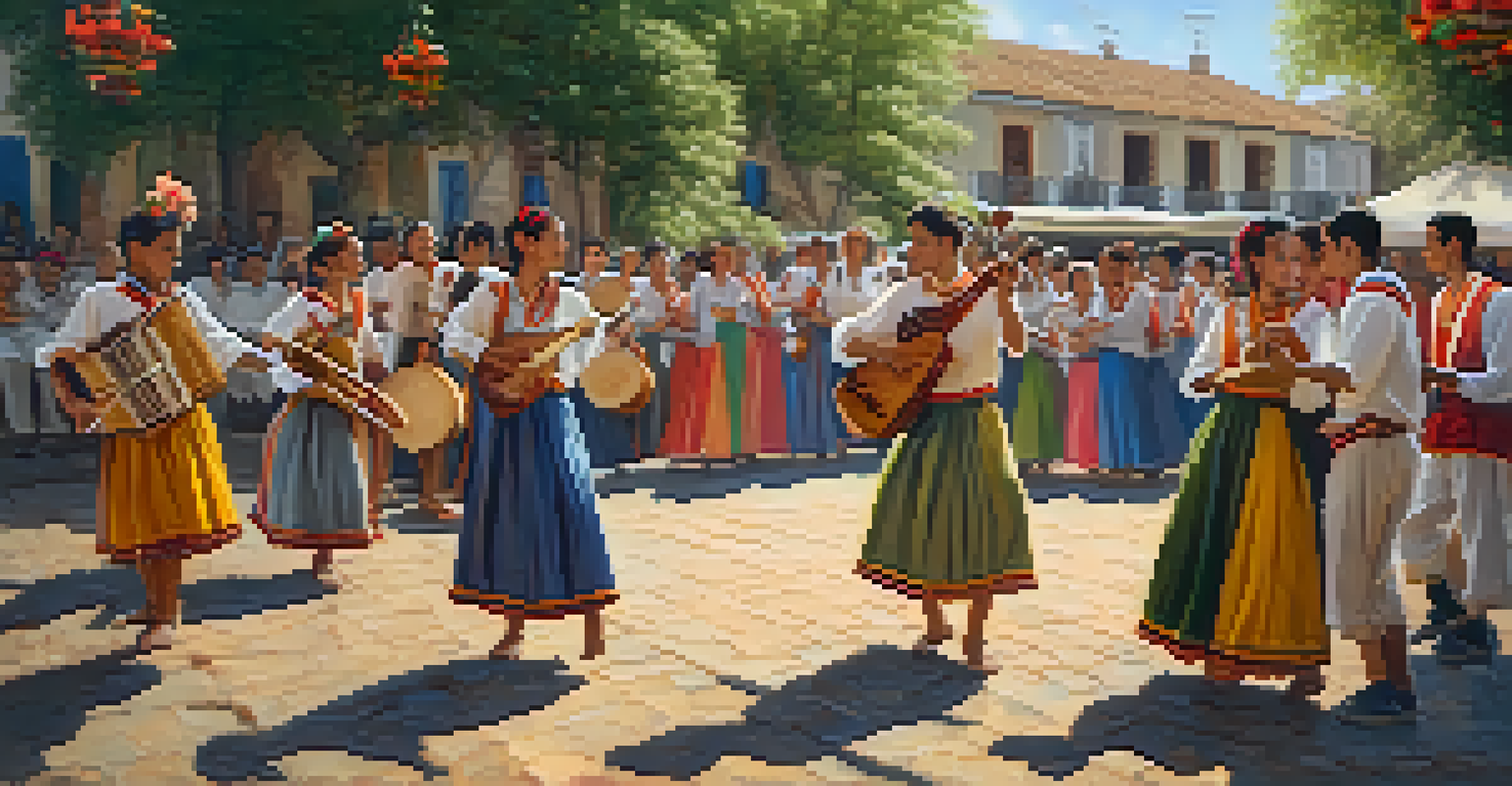The Rich Tapestry of Galician Music and Dance Traditions

An Introduction to Galician Music and Dance Traditions
Galicia, located in the northwest corner of Spain, boasts a musical and dance heritage that is as diverse as its stunning landscapes. With its Celtic roots, Galician music is often characterized by its haunting melodies and rhythmic beats. This cultural tapestry weaves together influences from ancient traditions, making it a vital part of the region's identity.
Music can change the world because it can change people.
At the heart of Galician music are traditional instruments like the gaita (bagpipe), tambor (drum), and pandeireta (frame drum). These instruments create a unique sound that resonates deeply with both locals and visitors. It's not just about the music; it's an invitation to experience the spirit and soul of Galicia.
Dance is equally integral to Galician culture, with lively folk dances bringing communities together in celebration. From the vibrant muiñeira to the expressive xota, each dance tells a story, often reflecting the region's history and traditions.
The Role of the Gaita in Galician Music
The gaita, or Galician bagpipe, serves as the cornerstone of many traditional music ensembles. Its powerful sound can evoke a range of emotions, from joy to melancholy, making it a beloved instrument among musicians and audiences alike. The gaita is often played during festivals, parades, and family gatherings, marking significant life events.

What makes the gaita truly special is its versatility. It can lead a lively dance or accompany solemn ceremonies, adapting to the mood of the moment. Additionally, gaita players often share their skills in communal settings, fostering a sense of camaraderie that is essential to Galician culture.
Galician Music's Cultural Significance
Galician music and dance are vital expressions of the region's identity, deeply rooted in its Celtic heritage and community traditions.
Learning to play the gaita is considered a rite of passage for many Galician youths. This commitment to passing down musical traditions ensures that the gaita—and the stories it carries—will continue to resonate through generations.
Traditional Dances: A Window into Galician Culture
Galician traditional dances are vibrant celebrations that often involve the entire community. Dancers typically wear colorful costumes that reflect regional styles, adding a visual feast to the auditory experience. Each dance has its own rhythm and steps, allowing participants to express themselves while connecting with their heritage.
Dance is the hidden language of the soul.
For instance, the muiñeira is a lively dance characterized by its quick-paced footwork and infectious energy. It's commonly performed during festivals, drawing both seasoned dancers and newcomers to join in. The spirit of the muiñeira embodies the joy and unity of Galician culture.
Dance gatherings often serve as an opportunity for storytelling, where older generations pass down tales to the youth through movement. This oral tradition not only preserves history but also strengthens the bonds within the community, ensuring that Galician culture remains vibrant.
Festivals: Celebrating Galician Heritage
Festivals in Galicia are a vibrant showcase of the region's rich music and dance traditions. Events like the Festival Intercéltico de Ortigueira attract thousands of visitors each year, bringing together musicians, dancers, and enthusiasts from across the globe. These festivals provide an immersive experience, allowing attendees to engage with the music, dance, and culinary delights of Galicia.
During these celebrations, the streets come alive with the sounds of traditional instruments and the joyous movements of dancers. Performances often feature a blend of traditional and contemporary styles, reflecting the evolving nature of Galician culture. This fusion not only honors the past but also embraces innovation, keeping the traditions alive.
The Gaita's Central Role
The gaita, or Galician bagpipe, is a cornerstone of traditional music, evoking a range of emotions and fostering community connection.
Festivals also serve as an essential platform for local artists to showcase their talents. Emerging musicians and dancers gain exposure and recognition, ensuring that the rich tapestry of Galician music continues to thrive in the modern world.
The Influence of Celtic Roots on Galician Traditions
Galician music and dance traditions are deeply influenced by their Celtic heritage, which is evident in the melodies and rhythms that permeate the culture. This connection to Celtic roots can be traced back to ancient times when Galicia was a part of the broader Celtic world. The similarities between Galician music and that of other Celtic regions highlight a shared history that transcends borders.
Instruments like the gaita share parallels with bagpipes found in Scotland and Ireland, showcasing the interconnectedness of these cultures. This cross-pollination of musical styles enriches Galician traditions, inviting influences that have shaped the soundscape over centuries.
The Celtic influence is also reflected in the themes of Galician music, often celebrating nature, love, and community. These universal themes resonate with audiences far beyond Galicia, making the region's music a timeless expression of the human experience.
Modern Adaptations of Galician Music and Dance
In recent years, Galician music and dance have experienced a renaissance, with artists blending traditional elements with contemporary genres. This fusion not only attracts younger audiences but also revitalizes interest in the region's rich cultural heritage. Musicians are experimenting with styles like rock, folk, and pop, all while honoring the traditional sounds of Galicia.
For example, bands like Berrogüetto and Luar na Lubre have gained popularity by merging traditional Galician instruments with modern arrangements. Their innovative approaches have opened doors for new interpretations, ensuring that Galician music remains relevant in today's musical landscape.
Modern Fusion Revitalizes Traditions
Contemporary artists are blending traditional Galician music and dance with modern styles, ensuring the cultural heritage remains relevant and vibrant.
Dance, too, has seen modern adaptations, with choreographers incorporating contemporary dance styles into traditional performances. This evolution enriches the experience for audiences and participants alike, allowing them to appreciate the versatility of Galician culture while preserving its essence.
Preserving Galician Music and Dance for Future Generations
As globalization continues to influence cultural practices, preserving Galician music and dance traditions becomes increasingly important. Local organizations and communities are actively working to document and promote these art forms, ensuring that they are not lost in the shuffle of modern life. Workshops, classes, and festivals play a crucial role in keeping these traditions alive.
Education is key in this preservation effort, with schools incorporating traditional music and dance into their curricula. By teaching younger generations about their cultural heritage, they foster a sense of pride and connection to their roots. This commitment to education ensures that the sounds and movements of Galicia will echo through time.

Ultimately, the preservation of Galician music and dance is a collective responsibility. By participating in local events, supporting artists, and sharing their stories, everyone can contribute to the rich tapestry of Galician culture and help it thrive for years to come.